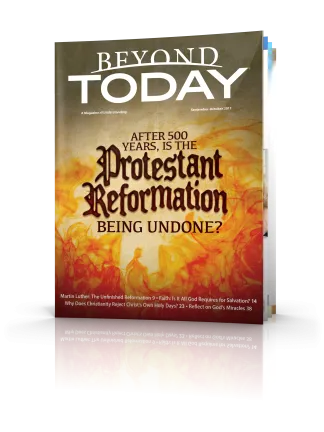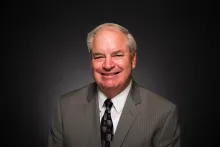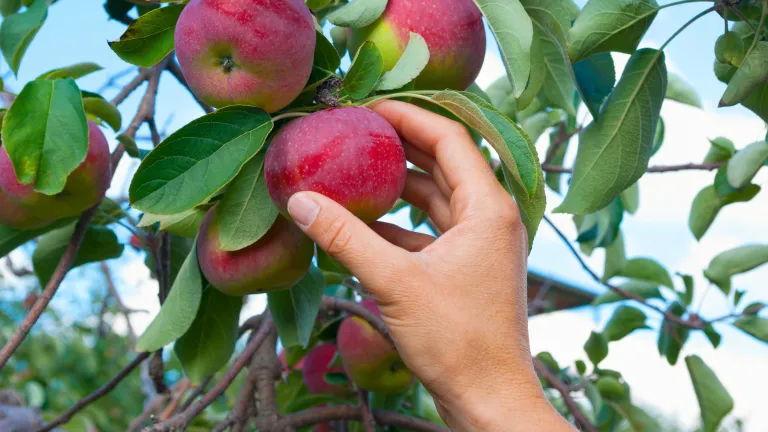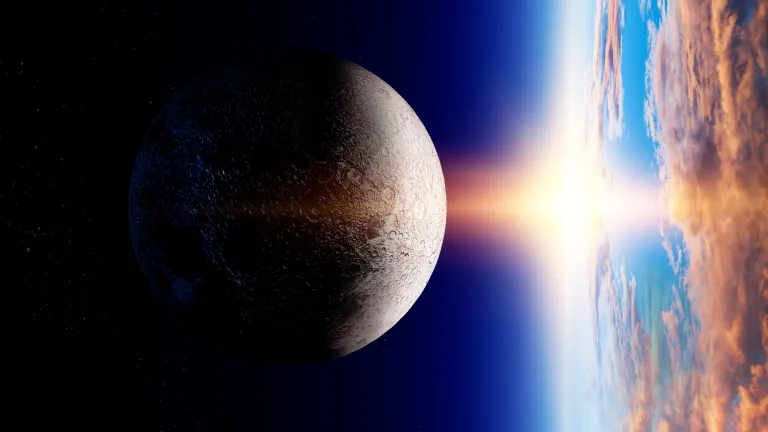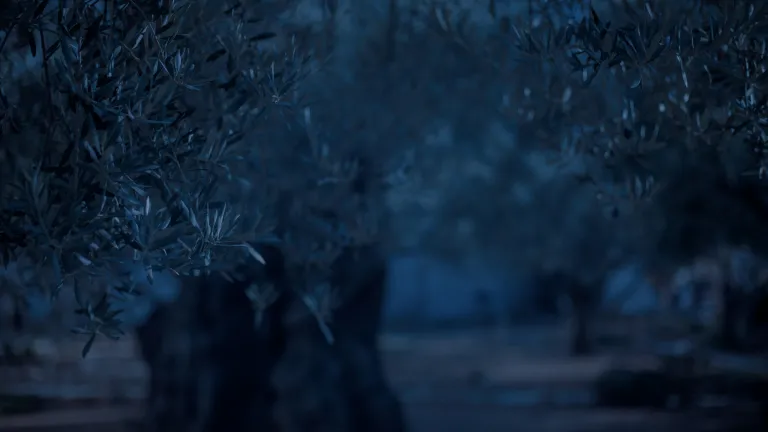
Follow Me: Three Gardens With One Purpose—Now the Next Stop
Course Content
We looked last time at man’s beginning with God in a garden. Though expelled, man’s future also awaits in a garden with God. This time, we focus on a garden experience that bridges the divide.
In the last “Follow Me” column (July-August issue) we embarked on a journey of exploring how Scripture is framed in bookend fashion by two unique but connected garden-like experiences. Both the Garden of Eden in the Genesis account and the city of God from heaven at the end of Revelation are fundamental to understanding the seamless purposes of God.
The divine declaration in Genesis 1:26, “Let Us make man in Our image, according to Our likeness” (Genesis 1:26), was but the beginning of the creative process. The ultimate conclusion of “bringing many sons to glory” (Hebrews 2:10) is a spiritual creation that is still in the making. That is, God is simply not through! Not with humanity as a whole or you personally! There’s so much more to God’s creative intent than what is shared in the initial Genesis account.
Both garden settings have three common features—the presence of God, the presence of the tree of life, and the presence of those made in God’s image and likeness. But there are other features absent from the garden setting of Revelation 22 that were mentioned in the Garden of Eden experience. To understand this, it’s essential that on our journey we visit the second garden—one in the middle.
What occurred here is effectively the “glue,” or should I say “heart,” that unites these gardens of Scripture. It’s here that the One who interacted with Adam and Eve in the first garden, the Word who became Jesus of Nazareth (John 1:1-4; John 1:14), directs us, “Follow Me”—welcoming us into this garden setting to experience with Him the most intimate moments of His human experience. It’s here that we linger and explore the ultimate “heart-set” of this Son of God, this Son of Man, as framed by the forever words, “Not My will, but Yours, be done” (Luke 22:42).
A place to clear the heart
We are invited through Scripture to enter this garden on the last night of Jesus’ human life. Our visit commences after His disciples have partaken of the symbolic bread and wine that their Rabbi has told them depicts His upcoming personal sacrifice. One of the disciples, Judas, is in the process of betraying Him. Now, the time is drawing near in which Jesus must become the sacrificial Lamb of God offered for the sins of the world (John 1:29). He proceeds to a space outside the walls of Jerusalem to clear His head and, most importantly, clear His heart to remain steadfast in agreement with His Heavenly Father.
He selects the Garden of Gethsemane (Hebrew for “olive press”), a familiar gathering spot for the Master and His disciples (John 18:2), several hundred yards outside the city across the Kidron Valley at the foot of the Mount of Olives. It’s reasonable to surmise how often Jesus’ entourage enjoyed the shade of the olive trees as they would journey on this natural route from Bethany across the Mount of Olives to the temple.
It’s here with one sweeping view that Jesus could gaze up westward toward the Temple Mount, the site of so many sacrifices, and then gaze upward eastward to the Mount of Olives, from where He would shortly ascend to heaven (Acts 1:9-12) and to where He will, as foretold, one day return to rescue humanity (Zechariah 14:3-4).
It’s here between the place of sacrifice and the site of future glory that Christ comes in the cool of night to huddle with His Father. He needed precious alone time with the One with whom He had shared eternity, because before the sun would set again He would be nailed to a wooden beam and die for you and me. Indeed, the hour had come! There was one more task on earth that needed accomplishing—one more teaching that would have to be taught by personal example to those who would heed His call of “Follow Me.” Before one bears a crown, one has to bear a cross (Luke 14:27).
The choice between two trees remains
What would be accomplished here stands in stark contrast to the first garden. Adam, along with his wife Eve, rejected God’s grace and commandment and were removed from Eden and the presence of God—because they gave in to their own will and desires against what God had said.
Eve was enamored with a tree that was “good for food . . . pleasant to the eyes, and . . . desirable to make one wise” (Genesis 3:6). She listened to the serpent too long and stuck around until it was too late. She bit into his lies that forsaking God’s specific instructions to not partake of the tree of the knowledge of good and evil wouldn’t have consequences. She totally swallowed the line that “you will not surely die” but “you will be like God” (Genesis 3:4-5). She became dead wrong, and her husband was one bite behind.
Thousands of years later the Spirit of God would inspire the apostle John to present a spiritual yardstick to measure the fruit of this tree. Note what John wrote in 1 John 2:15-17, with parallels from Genesis 3:6 in brackets:
“Do not love the world or the things in the world. If anyone loves the world, the love of the Father is not in him. For all that is in the world—the lust of the flesh [‘good for food’], the lust of the eyes [‘pleasant to the eyes’], and the pride of life [‘you will be like God’]—is not of the Father but is of the world. And the world is passing away, and the lust of it; but he who does the will of God abides forever.”
The first human couple succumbed to the lure of the tree of the knowledge of good and evil rather than, in faith, embrace the tree of life (Genesis 2:9). While Eden is gone, the low-lying fruit of the tree of the knowledge of good and evil still tempts humanity—be it the Son of Man when walking on this earth or us today. Will we continue to reach for it to take a bite?
Sacrifice not an event but a way of life
Jesus as “the last Adam” (1 Corinthians 15:45) made a different choice in the Garden of Gethsemane. He would not sacrifice God’s trust in Him, but sacrificed Himself without reservation. His desire to follow the Father’s will above His own was not merely an event but a way of life He had persevered in. The gateway into this garden, in terms of what it represented, was not only just now unlocked in the shade of olive trees, but had effectively been opened a few years before in the heat of the Judean desert.
It’s in that desert wilderness that the devil (the serpent) came at our Savior with the fruit of the forbidden tree (see Matthew 4:1-11). He spoke to Jesus’ hunger from fasting, appealing to the lust of the flesh, by beguiling Him in vain to turn rocks into bread.
The devil tried to lead Jesus down the lane of the pride of life by urging Him to jump from the pinnacle of the temple to prove who He was. Satan strove to overwhelm and blur our Savior’s vision and bend Him to the lust of the eyes by offering Him a virtual tour of the kingdoms of this world and their glory.
Jesus won every time even as the devil strove to sucker punch Him with a string of “ifs” regarding His status as God’s dear Son. Sorely pressed as the Son of Man in a hostile wilderness condition but ever fortified as the Son of God, Jesus concluded the wilderness experience with a “spiritual GPS” that would ultimately direct Him, step by step, to Golgotha: “‘For it is written, ‘You shall worship the Lord your God, and Him only you shall serve’” (Matthew 4:10).
But now this God-centered “heart-set” is transferred and fixed in time into the setting of this middle garden. It’s here that Jesus is confronted with the great decision of whether to live in the moment or consider eternity with His Father and ultimately with us. It’s here that He must, through the Holy Spirit, override the longings of His flesh to fulfill the words of Isaiah 53:5-6: “But He was wounded for our transgressions, He was bruised for our iniquities; the chastisement for our peace was upon Him, . . . and the Lord has laid on Him the iniquity of us all.”
He fully comprehends what is to happen as He departs this spot. Early in His ministry, He had stated that He would be “lifted up,” referring to His crucifixion (John 3:14). And like His fellow Jews of that day, He would have seen the agony and degradation endured by those who were crucified. Is it any wonder that, as Matthew 26:37-38 records, He was “deeply distressed” and “exceedingly sorrowful”?
“Abba, Father”—always there, always cares
It’s here in this garden that Jesus comes to pour out His heart three different times in prayer (Matthew 26:39-44) to the only One who can provide Him strength, wisdom and encouragement to move through this final leg of earthly existence. It’s here that He communes with the only One who is alerted to His inner trauma even as His earthly companions sleep just a stone’s throw away.
It’s here that we hear Jesus agonizingly request “that if it were possible, the hour might pass from Him” (Mark 14:35). And humanly He means it!
But in the next breath, He addresses God with the Aramaic term “Abba”—Dear Father (Mark 14:36)—speaking to God not merely as a sovereign entity, but as a Father who is near and going through the experience with Him. The intimate relational bond is deep and will hold as Jesus prays again: “. . . Father, all things are possible for You. Take this cup away from Me; nevertheless, not what I will, but what You will” (Mark 14:36).
It’s here in this middle garden that Jesus declares that no matter what comes, He embraces the tree of life—and that His life will be given so that the forbidden tree with its curse will never take root in the future garden of God’s city in Revelation.
Within hours the second Adam will die—but not apart from God’s presence, as the first Adam died. Christ truly is “the way, the truth, and the life” (John 14:6). And He has led us to this garden spot of absolute surrender of personal agendas so often based on temporary gain versus long-term gain towards our Heavenly Father and those He brings into our lives.
Next time, we will take Jesus at His word when He said, “I go to prepare a place for you” (John 14:2), as He asks us to “follow Me” into the third garden—the City of God described in Revelation 22.
